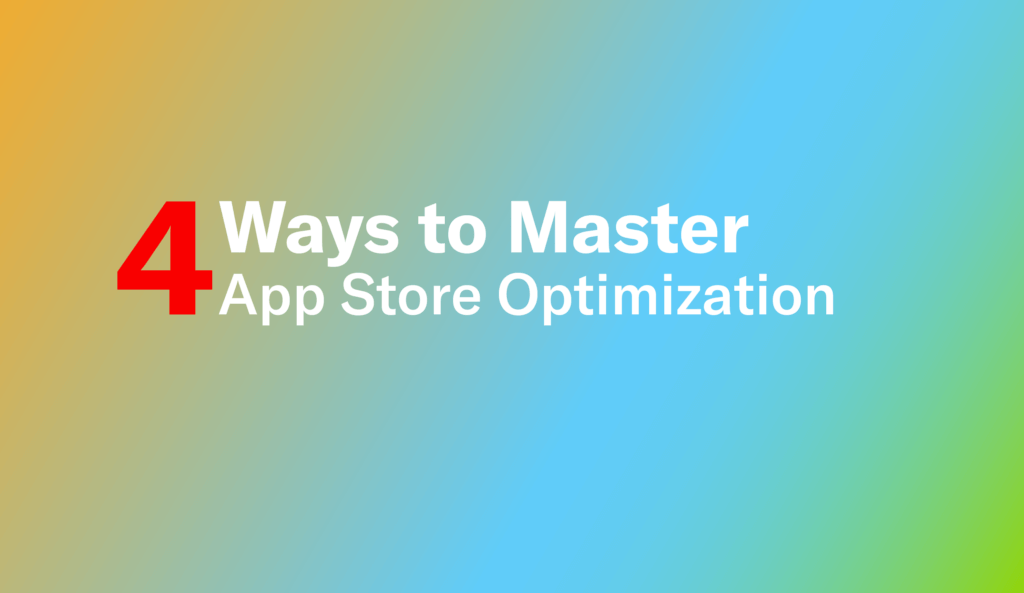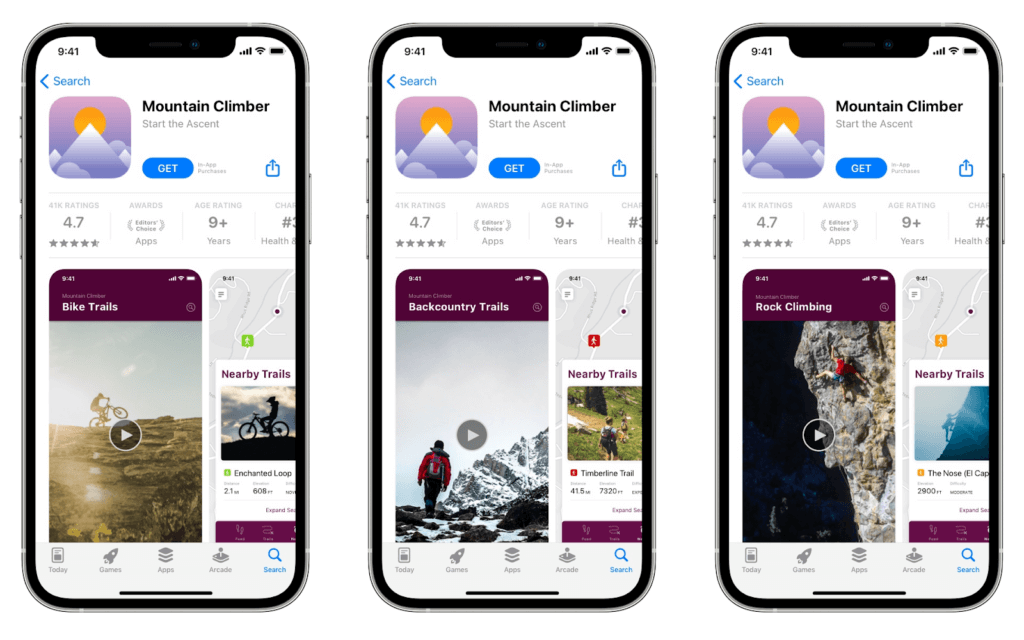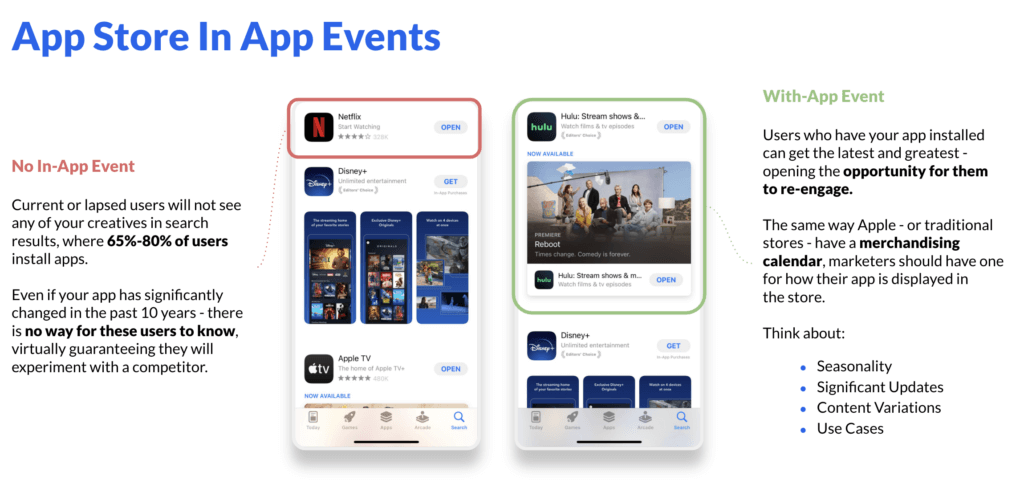4 Ways to Master App Store Optimization (ASO)

Harriet McNaughton Senior Marketing Manager, Airship

Share to my network
In this article
Categories
Book a meeting
Connect with our team of experts to discuss your conversion and loyalty goals, and how we can help you achieve them faster.
Get a demoIf you’re reading this blog, chances are you’re looking to gain new app customers. At the same time, you want to wring every drop of value out of your paid acquisition spend and continue to lower your cost per install. Either way, you’ve come to the right place to learn about navigating the complexities of App Store Optimization (ASO).
The reason for using ASO is to foster growth by expanding the user base and capturing more market share. ASO is the #1 driver of app acquisition and is crucial for app market success, the equivalent of search engine optimization for websites. According to Apple, 70% of App Store visitors use search to discover apps, and almost 65% of downloads happen directly after a search, not from being featured by Apple or Google. Additionally, “searching and browsing the app stores” continues to be the top way every generation globally discovers new apps to download, according to our survey of 11,000 global consumers.
In our recent webinar, ASO expert Dave Bell, GM of Airship’s Gummicube, shared valuable insights and best practices on app store visibility, conversion rate optimization and improving ASO strategies to drive user acquisition and maximize your market share. You can watch the full presentation on-demand or get the highlights here:
- Take Advantage of Custom Product Pages and Custom Store Listings
Custom Product Pages (CPPs) allow you to create 35 different product pages for your store listing, with unique URLs to include in your advertising campaigns. When a user clicks on an ad, they will be brought to the specific page you linked, which you can optimize to reflect the environment the user came from.

With every unique CPPs listing, you can obtain actionable data about what content and features increase conversion rates across various marketing channels and then apply these insights to your broader acquisition and ASO strategies. App Analytics in App Store Connect will be your hub to track the performance of CPPs (impressions, downloads, re-downloads and conversion rates).
Customizing app store listings to target important user demographics with seasonal and culturally relevant content or listings relevant to different searches allows marketers to increase conversion rates and lower the cost of user acquisition across all traffic sources — paid, organic, earned and owned. Apple and Google have made it much easier to get started achieving these benefits with CPPs and Custom Store Listings, respectively.
- Leverage In-App Events and Promotional Content for Engagement
Apple’s in-app events and Google Play’s promotional content are essential for boosting app discovery within the app stores and can help you reconnect and re-engage inactive app customers. Optimizing these features can contribute to a competitive edge, including the opportunity to be featured across a multitude of app store pages: Search, Apps/Games tabs, or the Today tab. In-app events are timely events within apps, such as challenges, competitions, premieres, special events, live-streamed experiences and major app advancements.
Once a user has downloaded your app, its listing in the app store becomes almost invisible. Also, both iOS and Android archive apps if users become inactive, reducing on-device visibility. In-app events reclaim visibility and ensure your app doesn’t lose out on real estate relative to competitor alternatives presented in search results.

- Measure ASO Effectiveness for Success
Measuring the effectiveness of ASO requires understanding how external events can impact results and filtering out that noise. When measuring ASO, consider the impact of seasonal variations, sporadic external events, certain external marketing channels, and fluctuations in the app’s ratings and reviews.
User ratings and reviews play a significant role in ASO success. Gummicube says four-fifths of users do not trust an app with ratings below 4 stars. Higher ratings can attract more downloads and improve an app’s ranking in search results. Conversely, low ratings can harm an app’s reputation and decrease visibility.
- Proceed Carefully With Google’s AI Helper
Google’s AI Helper, still in Beta, is not designed for ASO and may not always produce content that complies with Google’s own guidelines. Humans need to be in control. Inaccurate or incomplete details generated by AI Helper can seriously impact ratings and reviews if new app users feel misled. Additionally, AI Helper doesn’t have a prompt for desired keywords and doesn’t seem to use historically high-converting language from past experiments.
Likewise, AI Helper does not take compliance into account. Aside from generating inaccurate or inappropriate content, AI Helper may generate language in the short and full description that does not comply with Google’s recommendations and guidelines. In addition, AI-generated app store descriptions may not satisfy Google’s “accurate and compelling” requirement. Out-of-compliance language may cause an app to be ineligible for promotion or rejected.
For now, we recommend restricting your use of Google AI Helper to sparking ideas that a copywriter and ASO expert can use to help create original content.
App stores are evolving beyond mere distribution points; they have become dynamic environments where users discover new apps and services. The four strategies discussed here are not isolated tactics but should be integrated into a holistic approach encompassing keyword optimization, creative testing and frequent updates. Get in touch to learn how Airship can help you implement and master App Store Optimization strategies.
Watch our on-demand webinar, The New Era of ASO: Conquering the Modern App Stores, to gain insights about App Store Optimization.